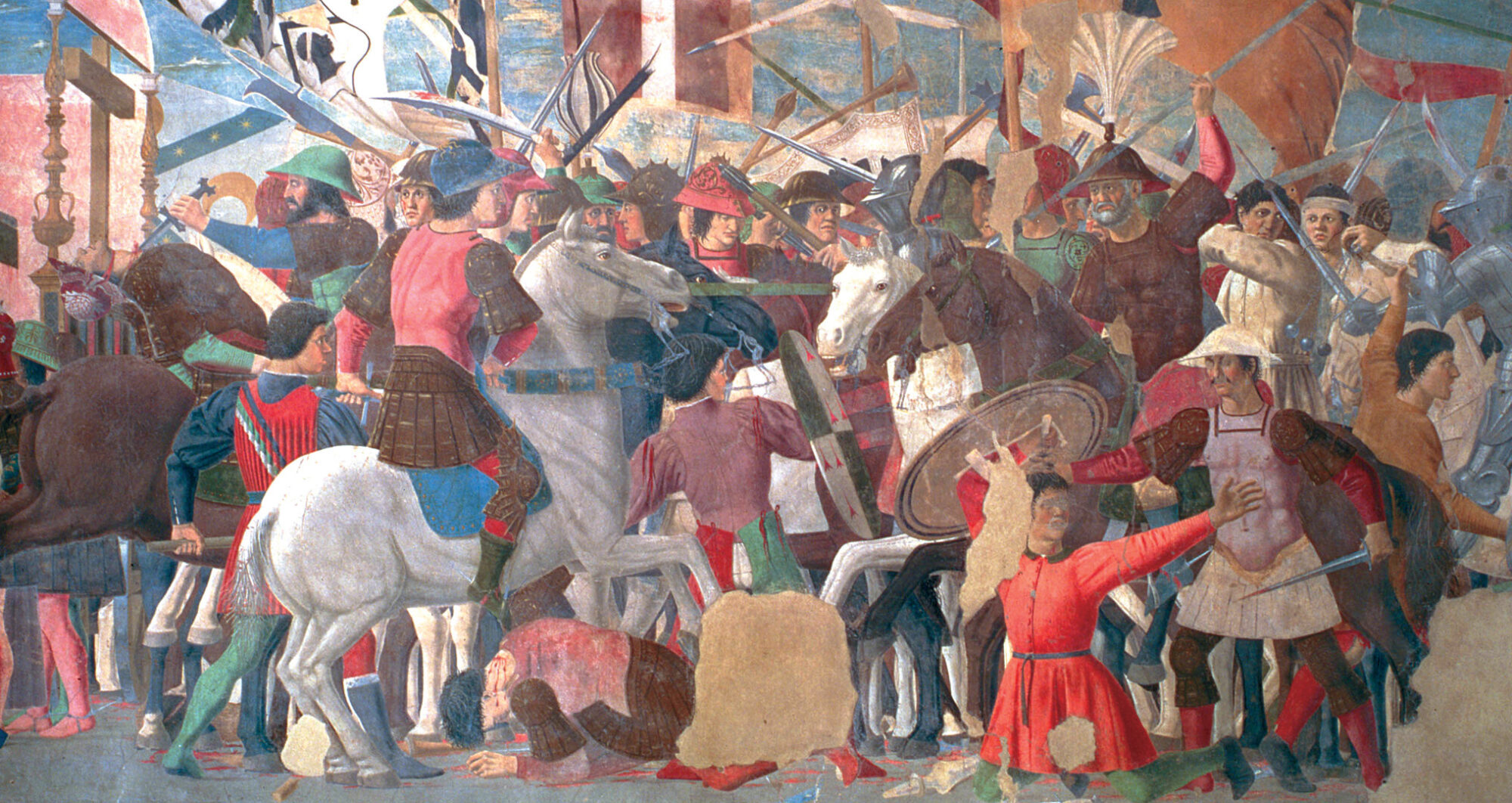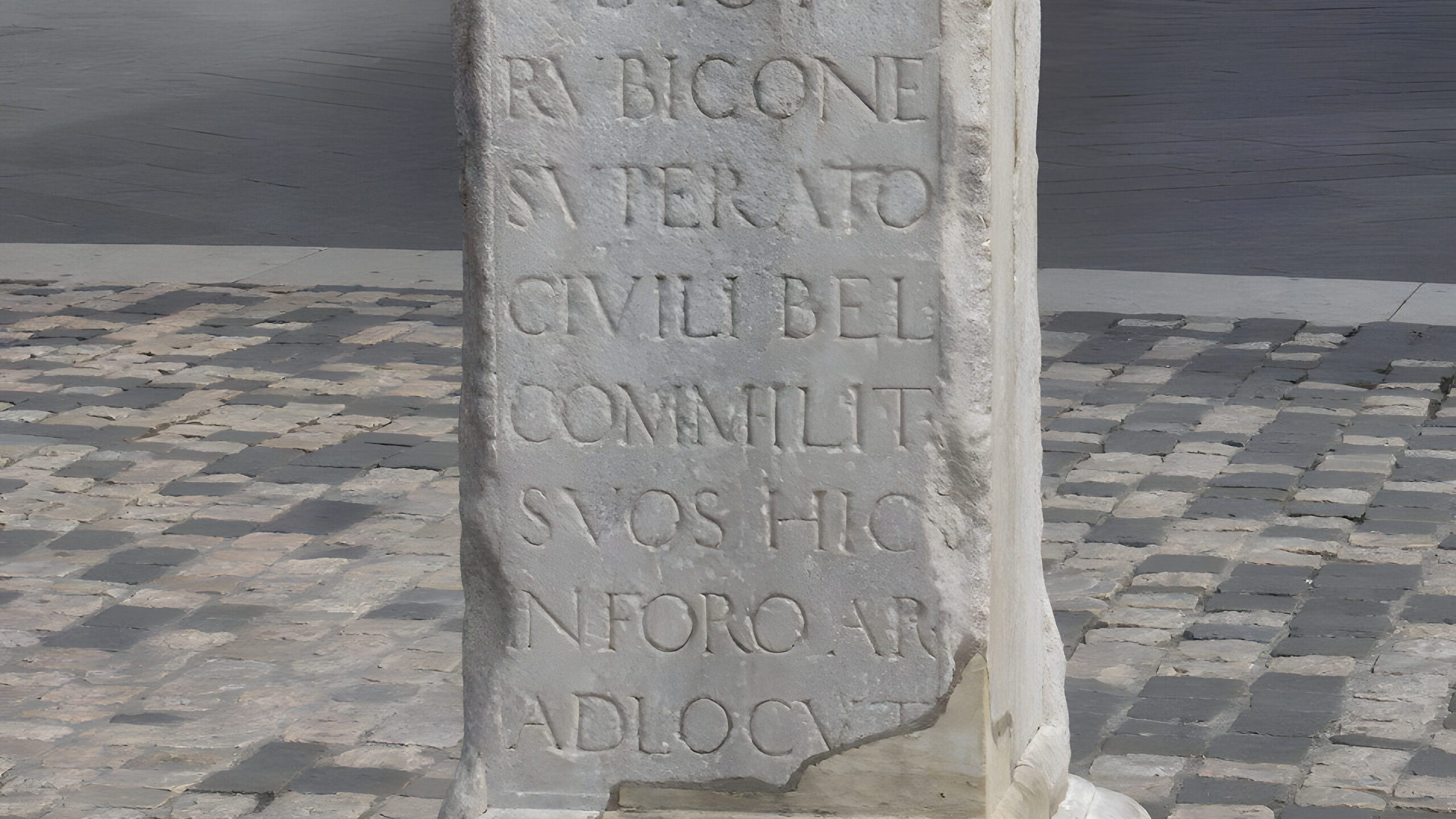By Arnold Blumberg
Byzantium, the successor state to ancient Rome, lasted over a thousand years. But it all could have been different because its first major enemy—Persia—was a fierce and determined competitor bent on the Empire’s demise. It would take martial adroitness supported by good intelligence gathering to sustain the state in its early days. But thanks to the use of spies in a number of guises, the City on the Bosphorus would survive the critical first challenge to its existence.
After the convulsions of the 3rd century ad, the old Roman Empire was divided among several rulers, with the senior emperors governing from the East. From the time of the Empire’s official split into separate western and eastern political entities in 395 ad, the latter region—the wealthier of the two—controlled the trade routes to Asia. It encompassed the granary of Egypt, the manpower of Anatolia and Thrace, and the great commercial cities of Antioch, Alexandria, and Athens. Its reach extended to the Crimea and stretched along the eastern coast of North Africa. All this was underpinned by its ancient Hellenistic culture and its assumption of the legacy of old, imperial Rome. By contrast, the Eternal City on the Tiber River became a mere provincial capital as western Europe fell into the grasp of barbarian Germanic tribes.
In the mid-6th century the eastern empire was able to reunite with the lands to the west. Under Emperor Justinian I(527-565) the Byzantines recovered Vandal-controlled North Africa, the Ostrogothic Kingdom in Italy, and part of Visigothic Spain. But this reconstruction of the old Roman Empire did not last long. The the people whose lands were acquired in the west no longer wished to be part of the Empire. The Byzantine Army could not hold the ground it had taken, and the government lacked the money to administer the newly conquered territory or pay its own army. Above all, an immediate threat from an enemy to the east raised great alarm and changed the Empire’s priorities.
The Growing Persian Menace
A great empire in ancient times until overthrown by Alexander the Great in the 330s bc, Persia revived in the 3rd century ad under the Sasanid Dynasty. From that time on, it served as rival-in-chief to the Byzantines. It would take all the skill—diplomatic and military—for the emperors at Constantinople to counter the growing Persian menace.
The Byzantines would often resort to spying to thwart their enemy. They used both internal intelligence and spies beyond their borders. The Byzantine Empire inherited large administrative bureaus (officia), among which were departments used to giving notice of laws and regulations to the general populace. Agents of these departments also acted as spies for the government, sending back information on the intent and state of mind of the citizenry.
Such spies grew out of what were known in classical and Christian Rome as frumnentarii, or internal secret police, whose job was to keep an eye on domestic enemies of the Emperor. They could be loaned out as international spies when the need arose. Abandoned by Emperor Diocletian late in the 3rd century ad, the frumnentarii were more dispersed than suppressed, many of their functions given to other governmental agencies. Part of the frumnentarii organization passed to the scrinium barbarorum (an office of barbarian affairs) created by the Byzantines at the start of the 5th century.
Even in the very early years of the Eastern Empire the government relied on domestic spies to perform nondomestic spying. In the first part of the 4th century the senior Caesar, Constantius, developed a spy network that had the two-fold purpose of keeping his military in line and evaluating the potential of foreign military establishments. Using enlisted personnel and junior officers, the Emperor was able to control his ethnically diverse soldiery by disseminating among them favorable propaganda (favorable to the Emperor) and money to the ranks.
In addition, his agents would make contacts with members of the forces of other nations who had relatives serving in the Byzantine military. Cultivating these sources with false intelligence about the Empire’s army and intentions and handing out liberal bribes, operatives would glean valuable information about current and potential enemy plans and capabilities.
Thousands of Spies Were Employed by the Byzantines Between the 4th and 7th Centuries
Internal spies could also act as a counter-intelligence resource. A system of government representatives served as imperial watchdogs for the administration. Appointed to key staff positions in the provinces, their main job was to curb corruption and abuse by local officials. But we know from their correspondence that they investigated more than just domestic problems in their assigned districts. They also supplemented the local governor’s reports with news of what was happening in neighboring countries, especially Persia. They reported the status of both foreign and friendly military movements and dispositions in times of peace and war to the Emperor. Further, they were urged to create local intelligence sources, and to counter attempts at intelligence gathering by current or potential foes of the Empire.
Estimates of the number of spies engaged by the Byzantine Empire to gain information about the Persians in the 4th through the 7th centuries range in the thousands. This period saw numerous battles fought, sieges undertaken, and many temporary truces brokered. The Byzantine employment of informants to gain background knowledge, strategic insight, and tactical intelligence to use against their opponent continued throughout this period of armed hostility and cold peace.
Byzantine praetorian prefects, such as Musonianus in the mid-4th century, used agents (in Latin referred to as speculatores) routinely trained in deception and subterfuge to keep tabs on what was happening in the Sasanid (i.e., Persian) Empire. Informed by his speculatores that the Persian king, Shah Shapur II (309-379), was occupied putting down a rebellion at the far eastern end of his realm, Musonianus attempted to bribe the Persian commander in charge of the Byzantine-Persian border. His hope was that while the Shah was away he could negotiate a treaty with the local Persian military authority that would be advantageous to his own interests. Unfortunately for Musonianus, no treaty was arranged; instead the Persians launched a full-scale invasion in 359.
It was not difficult for the Byzantines to foresee a large Persian invasion; the buildup of war materiel, food, and movement of troops to the border area would be duly noted. This occurred before Shah Kavad I’s ( 488-531) attack on the Byzantine Empire and the subsequent campaign of 502-506. The leading Byzantine generals in charge of Armenia saw the concentration of Persian force on their frontier. Wanting to assure themselves that the threat was real and not just a cover for an attack somewhere else, they sent two trusted members of their personal bodyguard into the enemy camp. Clothed in an ordinary Persian soldier’s garb, the spies remained among the Sasanians for almost two days gathering information that confirmed the exact target and invasion route the Persians planned to take. The spies then slipped back to friendly lines and delivered their news. Informed of the layout of the enemy bivouac by the returning spies, the Byzantine generals launched a surprise preemptive assault on the Persian army, which caused the latter to delay for weeks their intended invasion.

The Persians Rode Directly into a Byzantine Trap
Later in this same war, near the recently captured Byzantine city of Amida, the leader of the Persian army who had taken the place after a three-month siege lost his head—literally—on account of the workings of Byzantine spies. A mercenary in the employ of the Byzantines informed the Persian commander of a cache of 500 horses located only a few miles from the town. The commander set off with a large escort to claim the animals, unaware of the presence of a Byzantine army lying in ambush in case the Persians appeared. The Persians rode into the trap and were annihilated, the enemy general’s head carried off as a victory trophy.
Of course, the business of spying then, as it is now, was a complex matter which the Byzantines made more so by using double agents. The Byzantine historian Procipius related how Emperor Justinian was especially adept at using double agents to his own advantage. One such spy in the pay of both the Persians and Byzantines reported to the Emperor a planned alliance and invasion by a coalition of Persians and other peoples of the region. Justinian, knowing of the man’s duplicity, sent him back to the Persians with the story of a projected Byzantine-Hun alliance and a planned attack on them. Receiving this disinformation, the Persians dropped any thought of engaging the Byzantines in a war at that time.
Not only did the Byzantines use spies who were attached to military units in close proximity to Persian forces, but they maintained networks of agents in foreign territory. Supporting these spy cells were post roads, way stations, and safe houses maintained for the exclusive use of such spies in foreign residence. Nowhere in the Empire were these so well kept up or so numerous as along the Persian frontier.
While officially sanctioned spy organizations were regularly used in intelligence-gathering, these were not the sole tools used by the Byzantines to penetrate Persian security. There were other “secondary spies,” so called because of their apparent distance from normal government covert involvement. These were persons who, though not trained in the ways of the Byzantium, the successor state to ancient Rome, lasted over a thousand years. But it all could have been different because its first major enemy—Persia—was a fierce and determined competitor bent on the Empire’s demise. It would take martial adroitness supported by good intelligence gathering to sustain the state in its early days. But thanks to the use of spies in a number of guises, the City on the Bosphorus would survive the critical first challenge to its existence.
After the convulsions of the 3rd century ad, the old Roman Empire was divided among several rulers, with the senior emperors governing from the East. From the time of the Empire’s official split into separate western and eastern political entities in 395 ad, the latter region—the wealthier of the two—controlled the trade routes to Asia. It encompassed the granary of Egypt, the manpower of Anatolia and Thrace, and the great commercial cities of Antioch, Alexandria, and Athens. Its reach extended to the Crimea and stretched along the eastern coast of North Africa. All this was underpinned by its ancient Hellenistic culture and its assumption of the legacy of old, imperial Rome. By contrast, the Eternal City on the Tiber River became a mere provincial capital as western Europe fell into the grasp of barbarian Germanic tribes.
Reuniting the Lands to the West
In the mid-6th century the eastern empire was able to reunite with the lands to the west. Under Emperor Justinian I(527-565) the Byzantines recovered Vandal-controlled North Africa, the Ostrogothic Kingdom in Italy, and part of Visigothic Spain. But this reconstruction of the old Roman Empire did not last long. The the people whose lands were acquired in the west no longer wished to be part of the Empire. The Byzantine Army could not hold the ground it had taken, and the government lacked the money to administer the newly conquered territory or pay its own army. Above all, an immediate threat from an enemy to the east raised great alarm and changed the Empire’s priorities.
A great empire in ancient times until overthrown by Alexander the Great in the 330s bc, Persia revived in the 3rd century ad under the Sasanid Dynasty. From that time on, it served as rival-in-chief to the Byzantines. It would take all the skill—diplomatic and military—for the emperors at Constantinople to counter the growing Persian menace.
Although treated with respect and accorded all the amenities, Byzantine foreign representatives had a hard time acquiring information. While in the Persian capital of Seleucia-Ctesiphon, they were quartered in an isolated area of the city and kept away from the local populace so that they could neither gather from nor give information to resident informants. All diplomats would be escorted wherever they went and were continuously under surveillance. The Byzantine mission of 579 went through what can only be described as a case of overkill by their Persian hosts. They were not allowed to travel at certain hours of the day or night, or on certain roads. They were forced to stop at way stations every few miles to slow their movements and thus limit any opportunities to see or hear anything the Persians did not want them to be aware of. Upon their arrival at the capital they were so closely watched that one of them recorded in exasperation that the guard assigned to the envoys did not allow them to breathe fresh air or even put their heads out of the buildings where they were lodged.
If Byzantine emissaries had a difficult time spying for their country, the same was true of any Byzantine merchant attempting to conduct his business in Persia. The reason was simple: For centuries the favorite cover for a Byzantine spy trying to infiltrate Persian society was to disguise himself as a foreign trader. So whether the man was a real merchant simply trying to ply his true trade or a government spy posing as a merchant, all foreign sellers or purchasers were suspect. To regulate this activity the Persians (and Byzantines) required all merchants, foreign and domestic, to travel to and from trading centers by approved routes, and to conduct their trading activities only at a few specified centers or cities along the common border.
During wartime, and especially if a town was under enemy siege, the military commander in charge would be forced to round up all the merchants in the area and either kill or imprison them to prevent any from trading information or goods with the enemy. In one instance, a merchant of the city of Amida, who did a thriving business with both the Sasanid garrison and the besieging Byzantines, was persuaded to betray the town. Inventing a story about foodstuffs hidden beyond the city gates, the merchant and aspiring double agent was able to persuade the garrison to open the main gate and send several hundred men out to retrieve the alleged goods. He then alerted his new Byzantine friends, and the Persian expedition was destroyed in an ambush. This so weakened and demoralized the garrison that Amida was retaken by the Byzantines in 504, two years after it had fallen to the Persians.
The Continued Fight for Existence
Another secondary source of spies for the Byzantine government were high-ranking clergymen especially those who were stationed on the border with Persia. One example was Paul, the mid-6th-century bishop of the Persian border city of Nisibis. Paul routinely forwarded reports across the border to Constantinople of Persian troop movements in his area as well as details about the construction and strength of the city fortifications. Emperor Justin II (565-578), however, failed to act on the priceless intelligence supplied by the turncoat cleric.
In “The Last Persian War” (610-628) between the Byzantine and Sasanid Empires, the first decade of the conflict went against the Byzantine Empire. Under its leader Heraclius (610-641) the nation lost control of Mesopotamia, Armenia, Syria, Palestine, and Egypt. Not until 622 was the Emperor able to mount a counteroffensive in hopes of reclaiming Armenia. Heraclius used spies issuing false intelligence to trick General Shahrbaraz into thinking he, the Emperor, could advance through the mountains toward Armenia by a certain route. Heraclius actually took another route and, by so doing, recovered part of western Asia Minor.
Later Heraclius was even more fortunate. Soon large Persian armies were converging on Constantinople. Again resorting to the tactics of disinformation circulated by spies, Heraclius was able to keep the main Sasanid armies immobilized on the Phasis River in the southern Caucasus. He then had his brother Theodore move to destroy a Persian contingent stationed not far from the Byzantine capital. As a result, all of Asia Minor, Syria, and Mesopotamia fell back into the hands of Heraclius. After pushing again into the center of the Persian Empire in 627, he won a victory at the Battle of Gaugamela. As a result, peace was made between the two protagonists a year later, as well as complete Byzantine domination of its once-mighty foe.
Clever Byzantine spy techniques, using professionals, military men, civilian administrators, merchants, diplomats, and even clergy were highly effective in helping to secure battlefield victories and altering enemy grand strategies. All this helped to ensure the survival of the Byzantine state in its 250-year fight for existence against Persia.









Join The Conversation
Comments
View All Comments